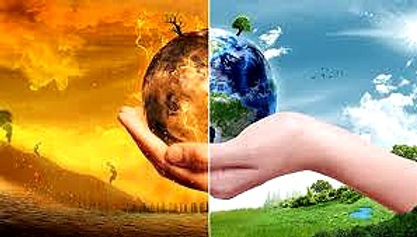

Humans - The Silent Enemies of Mankind
The strangest and the best creation of God, Homo Sapiens, started calling this Earth their home for the last six million years, and the current form of our ancestors evolved a little over 200,000 years ago. Civilization crafted its feet on the earth some 6 to 7,000 years and the modern human behavior flowered its roots a little for the last 40,000 years (Wilford, 2002). According to the most recent United Nations’ Worldometers estimate, the current world population is more than 7.6 billion. It is predicted that 11 billion people would inhibit on this earth and it is clear that the planet is not expanding. There is only so much space on Earth, not to mention only so many resources – food, water, and energy. A 2015 study in the Journal of Industrial Ecology, looked at the environmental impact from a household perspective. It puts consumption firmly in the spotlight. If we do not change our consumption habits, this would have a drastic effect on our environmental footprint (Ivanova et al. 2015).
The analysis showed that household consumers are responsible for
more than 30% of the globe's greenhouse gas emissions, and up to
80% of the world's land, material and water use. What's more,
the researchers found that the footprints are unevenly distributed
across regions, with wealthier countries generating the most impacts
per household. Human overpopulation is among the most pressing
environmental issues, silently aggravating the forces behind global
warming, environmental pollution, habitat loss, the sixth mass
extinction, intensive farming practices and the consumption of finite
natural resources, such as fresh water, arable land, and fossil fuels,
at speeds faster than their rate of regeneration. However, ecological
issues are just the beginning.
Humans: The Silent Enemy of Mankind
The issue is not that some alien beings or someone else is causing harm to mankind, the problem lies with the selfishness of the humans themselves. The worst of the ecological harm comes from “Increased Global Warming and Climate Change”. According to the Center for Biological Diversity, "The largest single threat to the ecology and biodiversity of the planet in the decades
to come will be global climate disruption due to the buildup of human-generated
greenhouse gases in the
atmosphere” (CfBD, 2014, p.4). Some climatologists
argue it may be too late to reverse climate change, and
it’s just a matter of time before the Earth becomes
uninhabitable – if hundreds of years from now.
While researching the relationship between global
warming due to Carbon-Footprint and a common man,
the Biological Diversity Organization determined that
the “carbon legacy” of just one child can produce
20 times more greenhouse gas than a person will save
by driving a high-mileage car, recycling, using energy
efficient appliances and light bulbs, etc. Each child
born today in the world will add about 9,441 metric tons of carbon dioxide to the carbon legacy of an average parent. The size of the carbon legacy is closely tied to consumption patterns. Under current conditions, a child born in the United States will be responsible for almost seven times the carbon emissions of a child born in China and 168 times the impact of a child born in Bangladesh.
The United States with its 325 million population, produces greenhouse gases at a per-capita rate that is more than double that of Europe, five times the global average, and more than 10 times the average of developing nations. The U.S. greenhouse gas contribution is driven by a disastrous combination of high population, significant growth, and massive (and rising) consumption levels, and thus far, lack of political will to end our fossil-fuel addiction. What about the role of undeveloped or underdeveloped countries of the world? Even though the industrialization has not infiltrated in the countries of Asia, Africa, Latin America .and Oceania, but they accounted for more than 60% of the global emission of the greenhouse gases
What is the Greenhouse Effect?
The Greenhouse Effect
Energy from the Sun that makes its way to Earth can have trouble finding its way back out to space. The greenhouse effect causes some of this energy to be waylaid in the atmosphere, absorbed and released by greenhouse gases. Solar energy absorbed at Earth’s surface is radiated back into the atmosphere as heat. As the heat makes its way through the atmosphere and backs out into space, greenhouse gases absorb much of it. There's a delicate balancing act occurring every day all across the Earth, involving the radiation the planet receives from space and the radiation that's reflected back out to space. It's this equilibrium of incoming and outgoing radiation that makes the Earth habitable, with an average temperature of about 59 degrees Fahrenheit (15 degrees Celsius). Without this atmospheric equilibrium, Earth would be as cold and lifeless as its moon, or as blazing hot as Venus. There are several different types of greenhouse gases. The major ones are carbon dioxide, water vapor, methane, and nitrous oxide. It is a well-known fact that he t increase in the different greenhouse gases not only contributes to global warming but effects ocean acidification, smog pollution, ozone depletion and changes to plant growth and nutrition levels.
The main sources of overproduction of these greenhouse gases
Transportation: 28 - 29% Automobiles, Ships, Aircrafts
Power Generation: 28 - 29% Burning Fossil Fuels
Industry: 10 - 11% Burning Fossil Fuels
Commercial and Residential 10 - 11% Burning Fossil Fuels
Agriculture: 08 - 09% Livestock, Agricultural Soils
Land Use & Forestry 10 - 11% Act as Sink for CO2
These gases allow more of the sun's rays to enter the atmosphere. Some solar radiation is still reflected back into space by the outer parts of the atmosphere, but it's believed the amount reflected back is gradually reducing. At the same time, the greenhouse gases absorb more of the solar radiation that is reflected back from the Earth's surface - trapping heat and keeping it in the atmosphere. The ability of the atmosphere to capture the Sun's warmth is essential for life on earth. But if significantly more warmth is being captured, this is bad news for the planet.
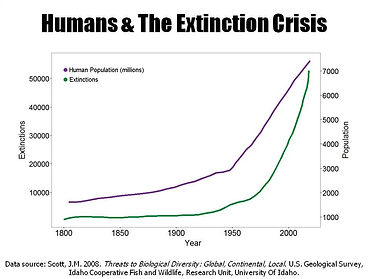
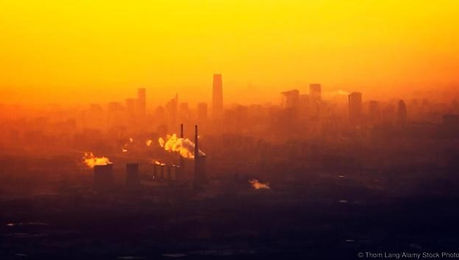
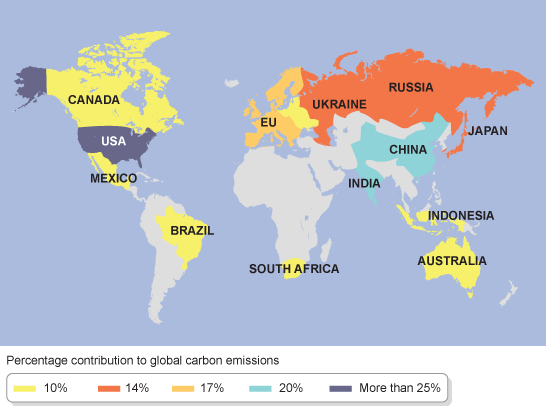

The Ozone Layer Crises
One more thing to worry about is the fast depletion of the “Ozone Layer”. The ozone layer is a high-level layer of gas in the stratosphere. The ozone helps to keep out harmful ultraviolet rays that cause sunburn to human skin and damage to plants. The resulting ozone holes let harmful ultraviolet radiation in and add to the greenhouse effect. The ozone hole is an area in the stratosphere above Antarctica where chlorine and
bromine gases from human
produced chlorofluorocarbons (CFCs)
and halons have destroyed ozone
molecules. On the other hand,
the build-up of greenhouse gases
impacts on global temperature in
two ways:
-
The gases allow more of the sun
rays to enter the atmosphere.
Some solar radiation is still reflected
back into space by the outer parts of
the atmosphere, but it's believed the amount reflected back is gradually reducing.
-
At the same time, the greenhouse gases absorb more of the solar radiation that is reflected back from the Earth's surface - trapping heat and keeping it in the atmosphere. The ability of the atmosphere to capture the Sun's warmth is essential for life on earth. But if significantly more warmth is being captured, this is bad news for the planet.
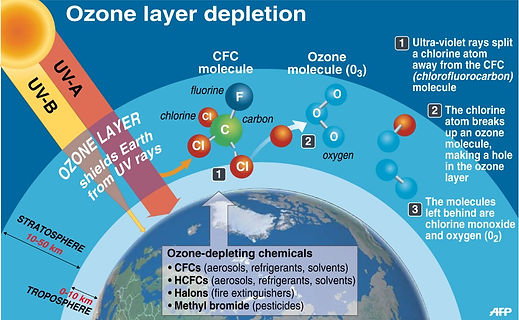
Implications of Global Warming
Scientists, politicians, and industrialists continue to debate the causes of global warming, with some arguing that it is a natural process that's been going on for centuries. However, the Intergovernmental Panel on Climate Change (IPCC) - established by the United Nations in 1988 - has stated the evidence suggests that human activity does affect global warming, in particular through the release of greenhouses gases.
There is also debate over how quickly the earth is warming up. Some scientists estimate that atmospheric temperatures could rise by 1.4°C - 5.8°C in the next 100 years. Whatever the causes and timescale, the implications of global warming are very serious. Global warming could melt the world's ice caps and glaciers, leading to an increase in sea levels. Some scientists estimate that over the next hundred years sea levels could rise by between 10 cm and 90 cm - making many coastal areas around the world uninhabitable. Global warming could also affect weather patterns, leading to more droughts, flooding, and extreme weather. Hence, if mankind didn’t take measures to stop global warming sooner, then the day is not extremely far when this species of Animalia Kingdom is doomed to extinction.
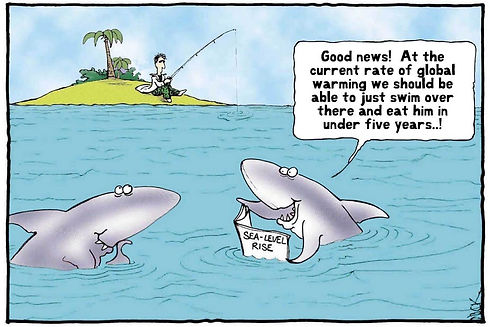
NASA Climate Time Machine
I'm a paragraph. Click here to add your own text and edit me. It's easy.




